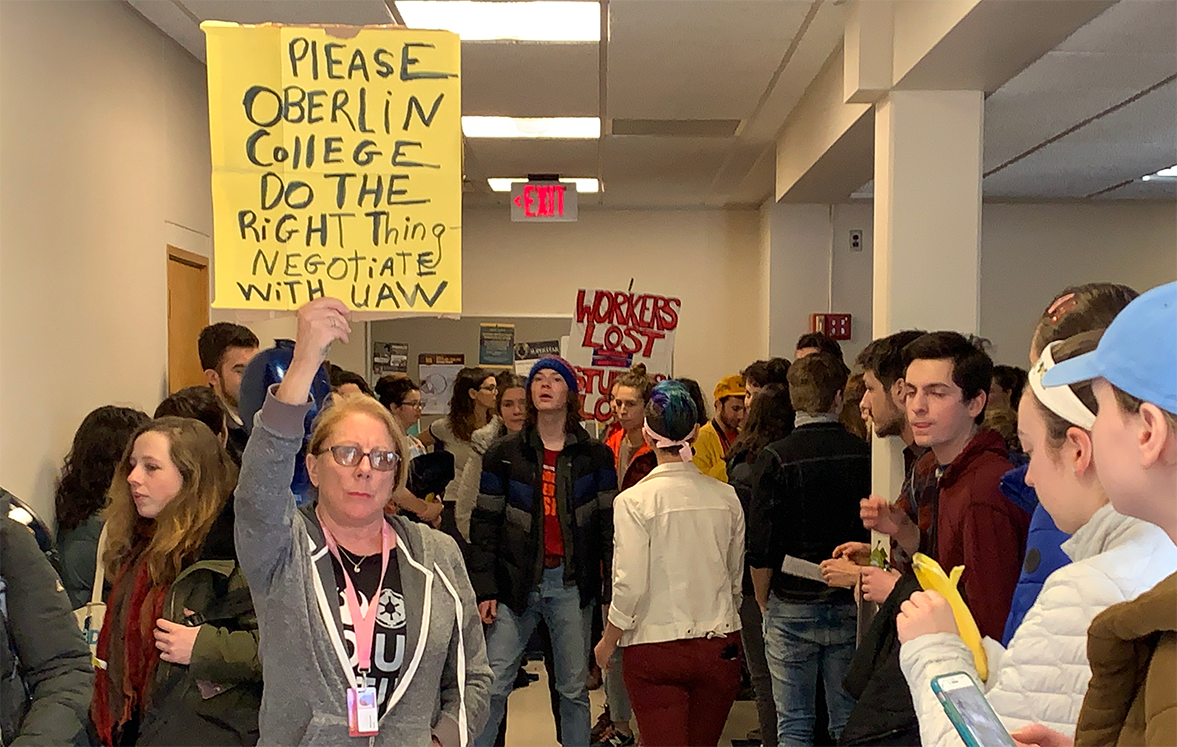After AAPR began rolling out reports last spring, a new group formed to challenge the fundamental logic behind these reports: the logic of austerity. Oberlin Beyond Austerity began organizing to show parallels between AAPR and the history of neoliberalism, the period of capitalism when Ronald Reagan in the U.S., and Margaret Thatcher in the U.K., began cutting government spending and ushering in periods of social decline.
Reagan and Thatcher’s governments, in response to what they have perceived as state overspending, implemented cuts to social services and welfare, and privatized government initiatives. More recently, austerity measures have been seen in Europe following the ‘07-‘08 fiscal crisis. The atmosphere of spending cuts and privatization create an “austere” environment. Like AAPR, these administrations were obsessed with their financial “bottom line” and infatuated with the quick fix that austerity programs provided.
This College is following the austerity “playbook” as they make cuts to services across the board. No matter that it may upend the livelihoods of 108 unionized custodial and dining staff in the process — using subcontracted labor, instead of union labor, is an obvious path to easing the College’s financial burden. This disingenuous appeal to “necessity” characterizes all austerity regimes. But is it truly so necessary? Is there really no alternative?
Austerity often does have short term benefits. It is by all means intuitive that if one spends less money, one is going to have more money on hand. The problem, however, is that the long term damages far outweigh the short term benefits. Governments which have employed austerity measures tend to see diminishing government debt and decreasing inflation — the desired results. But these come at the cost of public services and investment in vital economic spending; as a consequence, workers’ lives are placed in precarity, and the workers whose jobs are eliminated no longer participate in the economy. A form of social collapse is the expected long-term result.
Oberlin is not itself a government — the comparison to government austerity programs is an analogy. But there will be similar consequences to the “One Oberlin” program. Cutting spending will lead towards a decreased quality of service and education. Consequently, fewer and fewer students will look at Oberlin as an appealing or interesting application choice, and cyclically, the school will continue to lose enrollment and then have to find new ways to cut.
It is important, then, to challenge the logic of austerity measures. Even President Ambar seems willing now to concede that Oberlin cannot “cut its way to excellence” — sometimes, in fact, institutions must spend money, and accrue a deficit, to make money, and benefit society. The school and concerned students must think of different ways to advance the College into the future, and must not imperil its community stakeholders by thinking short-sightedly.

